Last updated on
Discover the expenses involved in installing a kitchen exhaust fan as we break down the costs and factors that influence this essential home improvement project.
If you love cooking, then you know how important it is to have a well-ventilated kitchen. Without proper ventilation, your kitchen can become stuffy, smelly and uncomfortable.
This is where a kitchen exhaust fan comes in handy. It helps to remove smoke, steam, and odors from your cooking space while improving indoor air quality.
However, the cost of installing a kitchen exhaust fan can be a concern for many homeowners. In this article, we will explore the factors that affect the installation cost of a kitchen exhaust fan and help you determine how much you should budget for this essential home improvement project.
What's Inside
Types of Kitchen Exhaust Fans
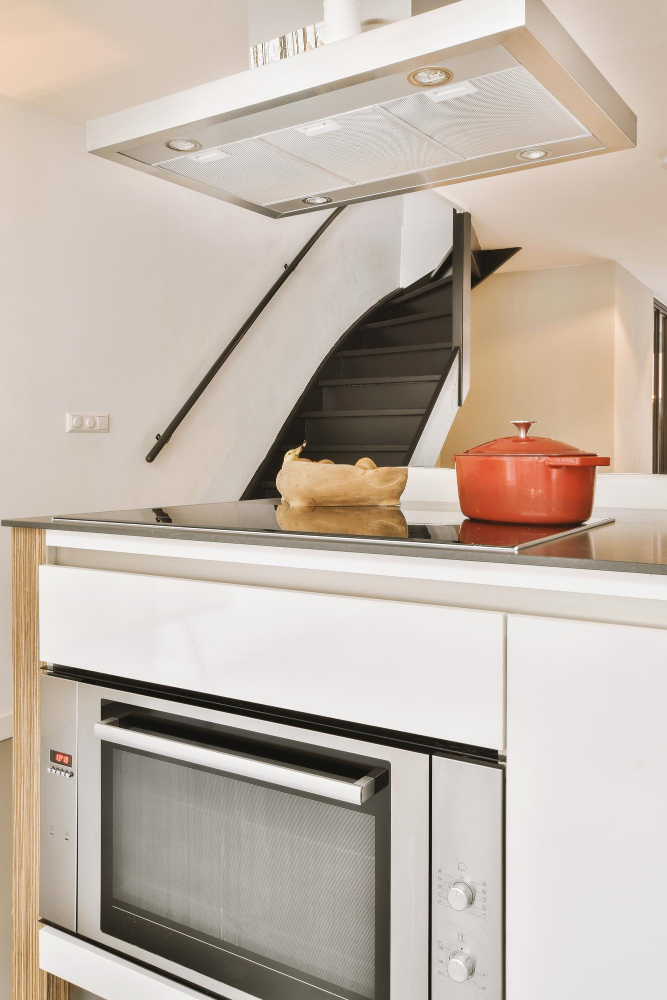
The most common ones include wall-mounted, under-cabinet, island-mount and downdraft exhaust fans.
Wall-mounted exhaust fans are installed directly on the wall above your cooktop or range. They come in different sizes and designs to fit any kitchen style.
Under-cabinet exhaust fans are mounted beneath a cabinet above your stove or cooktop. They save space while providing adequate ventilation for your cooking area.
Island-mount exhaust fans hang from the ceiling over an island or peninsula-style cooktops that do not have walls nearby for mounting a fan.
Downdraft Exhaust Fans pull smoke and steam down through vents located at counter level near the cooking surface instead of up through ductwork like other types of venting systems. Each type has its advantages depending on factors such as kitchen layout, size of appliances being used among others.
Choosing the Right Exhaust Fan
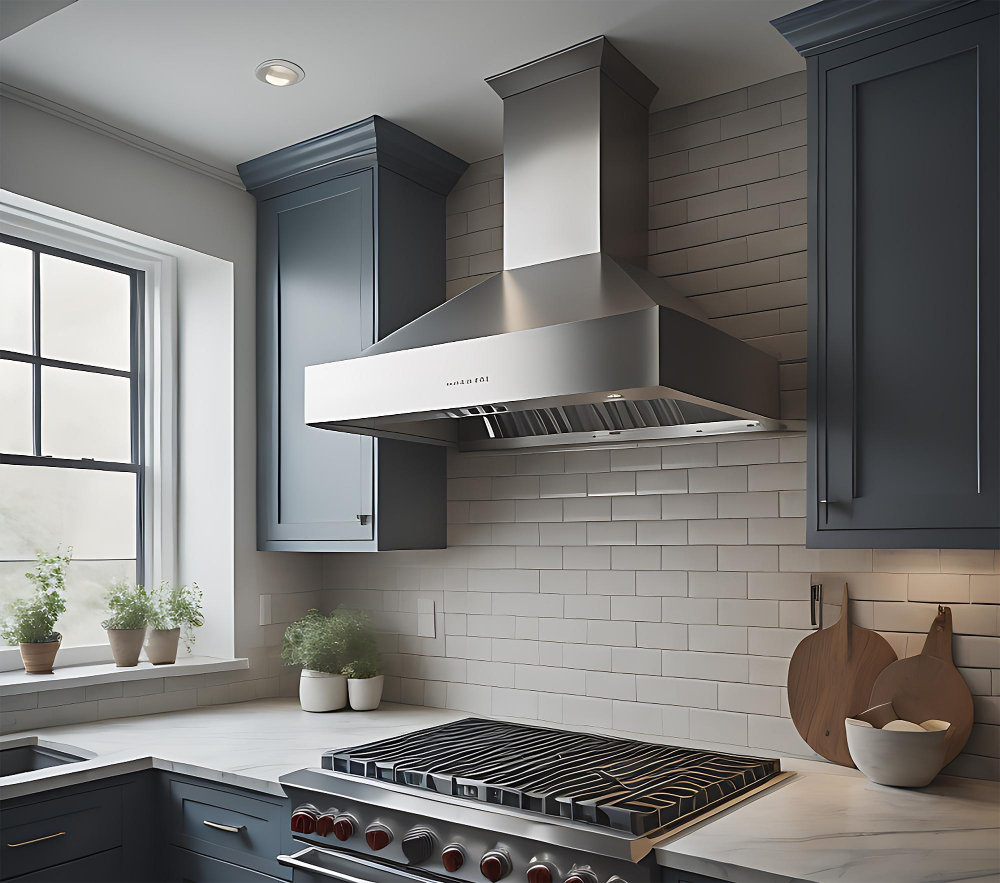
First and foremost, you need to determine the size of your kitchen and choose an exhaust fan with a suitable CFM (cubic feet per minute) rating that can effectively remove smoke, steam, and odors from your cooking space. The general rule of thumb is that for every 10 square feet of kitchen space, you should have at least 100 CFM.
Another important consideration is the type of hood or ventilation system that will work best in your kitchen. There are different types available such as wall-mounted hoods or island hoods depending on where your stove is located.
You also want to think about noise levels when selecting an exhaust fan since some models can be quite loud while others operate quietly without disturbing conversations in adjacent rooms.
Lastly but not least important factor when choosing a new range hood for installation would be its design style which should match with other appliances present in the room so it looks cohesive together.
Factors Affecting Installation Cost
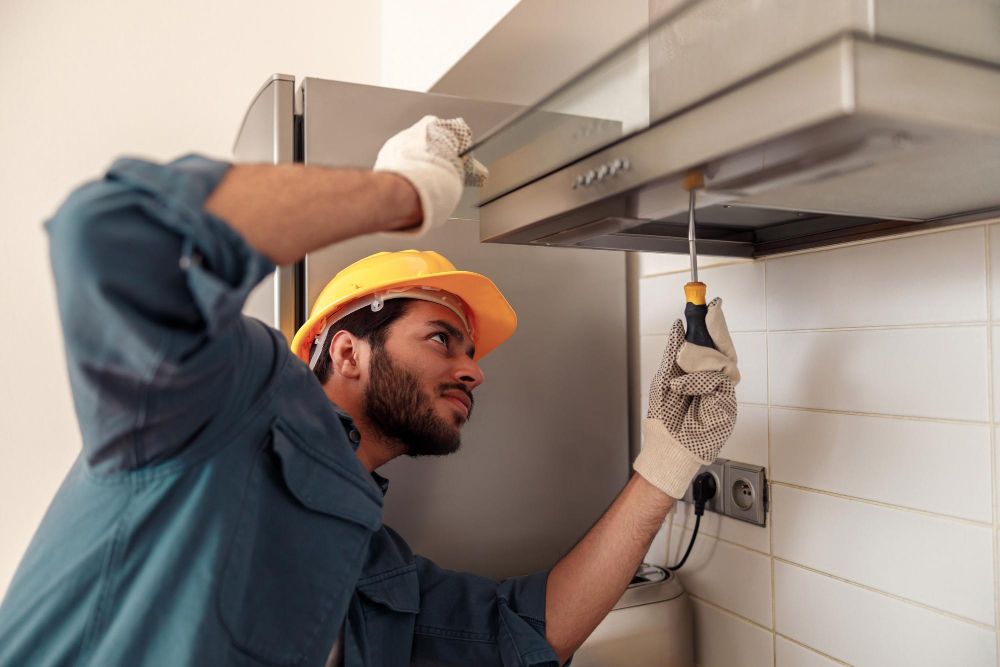
The size and type of the fan, as well as the complexity of installation, are some key considerations that affect the overall cost. Other factors include labor costs, materials required for installation such as ductwork and electrical wiring, permits and regulations in your area.
If you opt for a professional installation service rather than doing it yourself (DIY), this will also add to your expenses. Professional installers have experience working with different types of exhaust fans and can ensure proper ventilation while minimizing any damage to walls or ceilings during installation.
Another factor that affects the cost is whether you choose a ducted or ductless kitchen exhaust fan system. Ducted systems require more extensive work involving cutting holes in walls or roofs to create an outlet for air flow outside while ductless systems recirculate air back into your home after filtering it through charcoal filters.
DIY Vs. Professional Installation
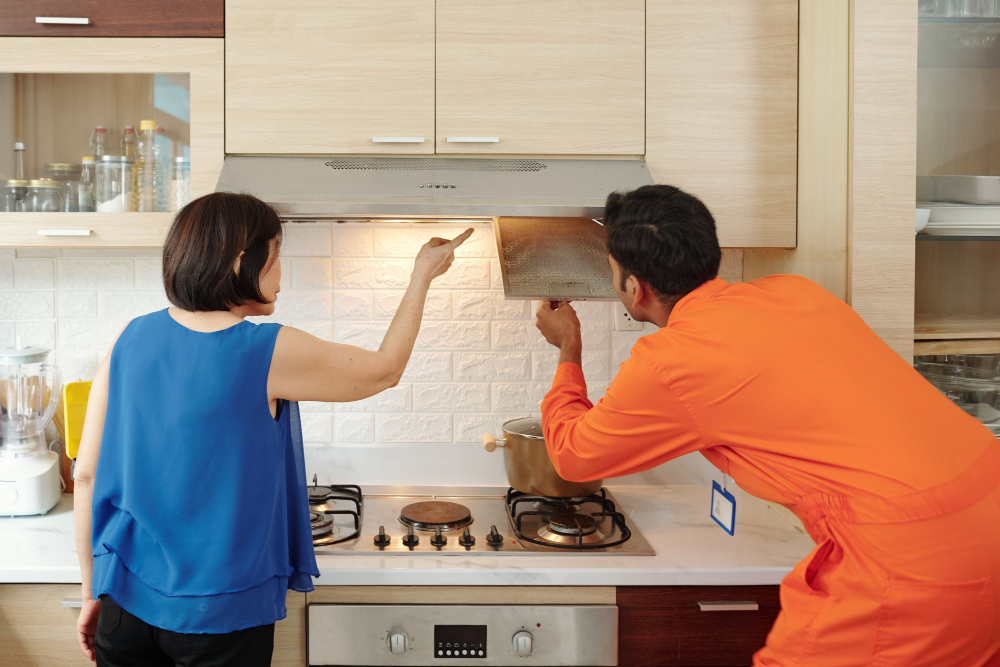
It’s important to note that installing an exhaust fan involves electrical connections, venting and ductwork considerations that require expertise. If you’re not confident in your skills or don’t have the necessary tools, it’s best to hire a professional installer.
Professional installation ensures that the job is done correctly and safely while saving you time and effort. Professionals also know how to handle any unexpected issues during installation such as wiring problems or structural challenges.
While hiring professionals may cost more than doing it yourself initially, their work comes with warranties which means they will fix any issues if something goes wrong after installation. Professional installers can help you choose the right type of kitchen exhaust fan based on your needs while ensuring compliance with local building codes.
Whether you decide to go for DIY or professional installation depends on your level of skillset when handling home improvement projects as well as budget constraints.
Average Kitchen Exhaust Fan Costs

On average, homeowners can expect to spend between $200 and $800 for a standard kitchen exhaust fan. However, this price range does not include the cost of installation labor or any additional materials required for ductwork or electrical connections.
For more advanced models with features like built-in lighting or smart controls that allow you to adjust settings from your phone, prices can go up significantly. High-end models may also require professional installation which adds an extra expense.
It’s important to note that while it may be tempting to opt for a cheaper model in order to save money upfront; investing in a high-quality kitchen exhaust fan will pay off in the long run by improving indoor air quality and reducing energy costs associated with heating/cooling your home.
Labor Costs for Exhaust Fan Installation
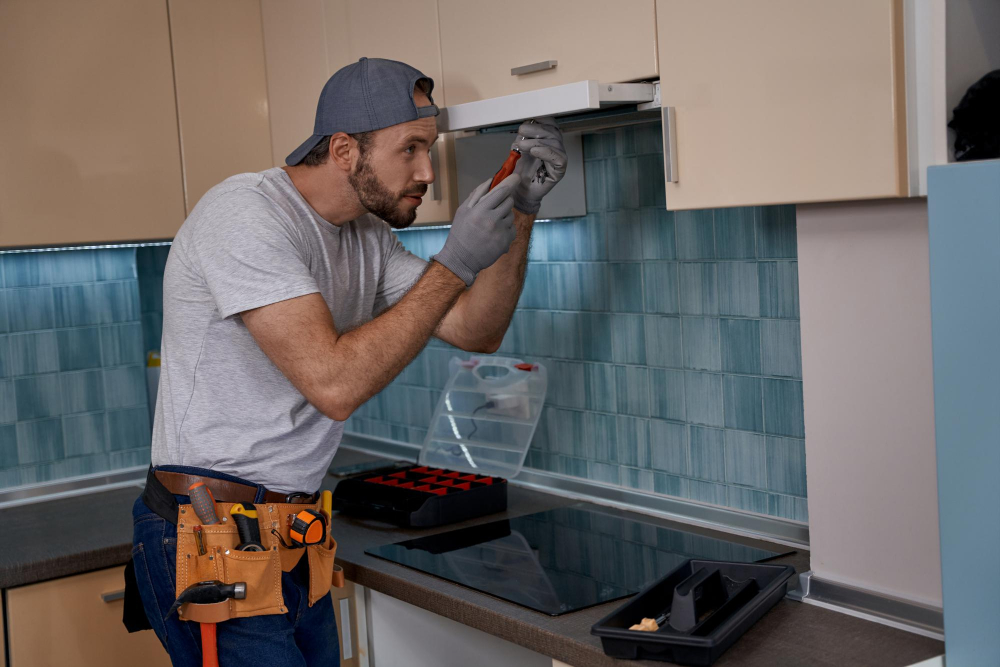
The cost of labor varies depending on the complexity of the installation, location, and contractor’s experience. On average, you can expect to pay between $100-$300 for professional installation services.
The cost may increase if your kitchen requires additional electrical work or ductwork modifications. If you opt for DIY installation, keep in mind that it may take longer than expected and could result in costly mistakes.
To save on labor costs without compromising quality workmanship, consider hiring an experienced handyman instead of a licensed electrician or HVAC technician. However, ensure that they have adequate knowledge and skills required for this type of project.
It is essential to get multiple quotes from different contractors before settling on one as prices vary significantly among service providers. Be sure to ask about their experience with similar projects and check their references before making any commitments.
Required Materials and Tools

The specific requirements may vary depending on the type of exhaust fan you choose and your installation method. However, here are some common items that you may need:
Materials:
- Exhaust Fan Unit
- Ductwork (if applicable)
- Screws or Nails
- Electrical Box
- Wire Connectors
Tools:
- Drill with Bits
- Screwdriver
- Hammer
- Measuring Tape
- Pliers
- Level
Before starting the installation process, make sure to read through the manufacturer’s instructions carefully to ensure that you have all necessary materials and tools for your particular model. It is also important to follow safety guidelines when working with electrical wiring or ductwork.
Electrical Connections and Wiring

You need to ensure that the wiring is compatible with your home’s electrical system, and the connections are safe and secure. If you’re not familiar with electrical work, it’s best to hire a licensed electrician for this part of the installation process.
The cost of hiring an electrician will depend on their experience level, location, and hourly rate. On average, expect to pay between $50-$100 per hour for an electrician’s services.
When choosing an exhaust fan model or brand, consider its power requirements in terms of voltage (V) and amperage (A). Ensure that your home has enough power capacity to support the new appliance without overloading your circuit breaker or causing any other electrical issues.
It is also essential to follow all safety guidelines when working with electricity during installation. Turn off all power sources before starting any work on wiring or connections; use proper tools such as wire strippers; wear protective gear like gloves if necessary; double-check everything before turning back on electricity after completing installations.
Venting and Ductwork Considerations
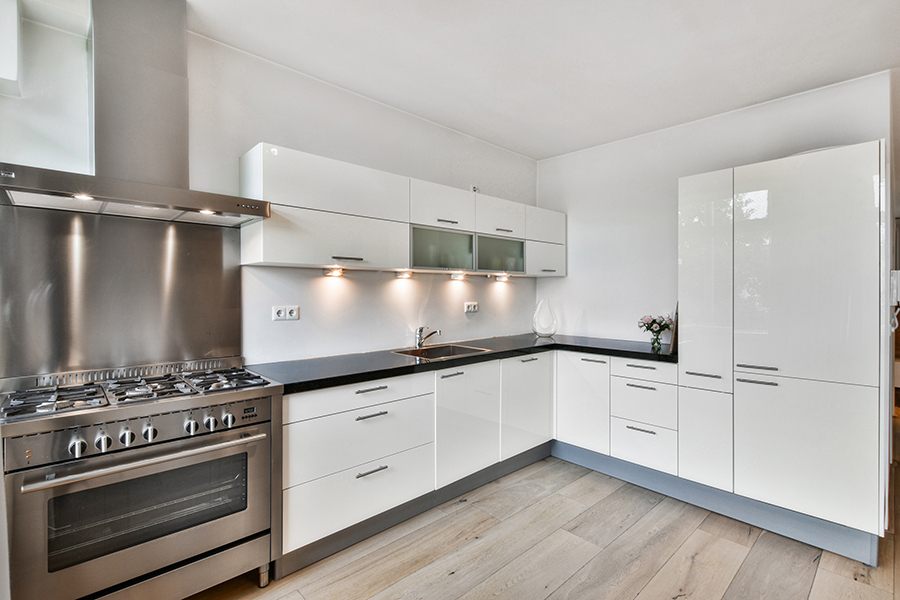
The type of ventilation system you choose will depend on your kitchen’s layout, location of the range hood or cooktop, and whether you have an existing ductwork system in place.
If your home already has a ducted ventilation system installed, then it may be easier to install a new exhaust fan as it can be connected to the existing ducts. However, if there is no pre-existing venting or if you want to change its location for better efficiency or aesthetics reasons; then additional work will need to be done.
Ductless systems are also available but require more maintenance than their counterparts since they use filters instead of vents. They’re ideal for homes without access to exterior walls where traditional venting isn’t possible.
It’s important that proper measurements are taken before purchasing any materials so that everything fits correctly during installation day – this includes measuring distances between appliances and ceilings/walls/floors where necessary modifications might need doing such as cutting holes through drywall etc., which could add extra costs depending on how much work needs doing.
Ductless Vs. Ducted Exhaust Fan Installation Costs
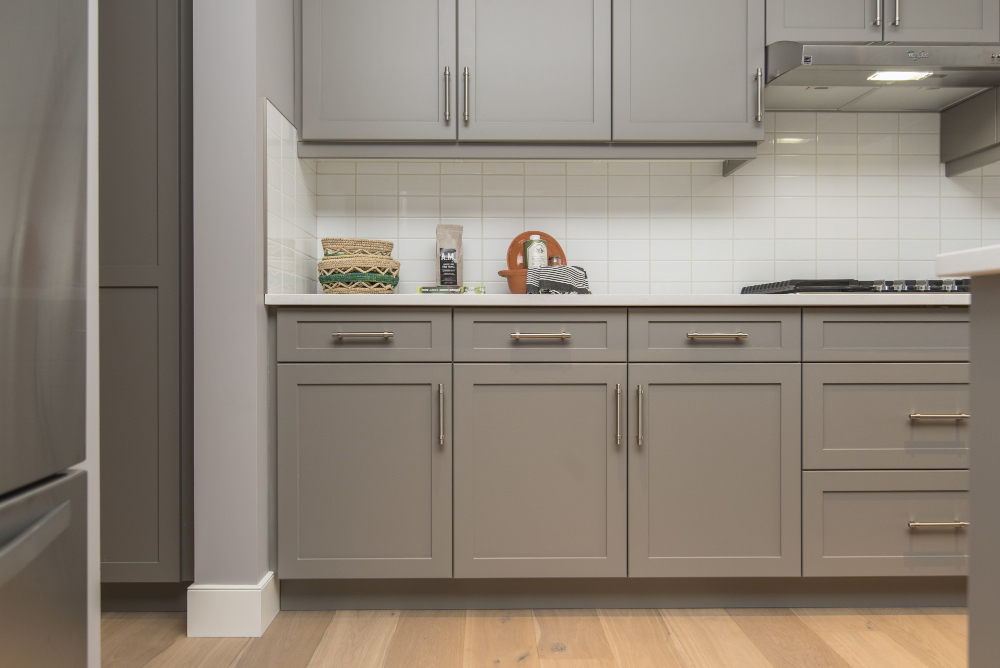
Ductless models recirculate air through a filter, while ducted models vent air outside through a series of pipes or ducts. The choice between these two options can significantly affect your installation costs.
Ductless exhaust fans tend to be less expensive than their counterparts because they do not require any additional venting or ductwork. However, they may not be as effective at removing smoke and odors from your kitchen since the filtered air is simply recirculated back into the room.
On the other hand, installing a ducted system requires more work and materials such as pipes or vents that run from your kitchen to an exterior wall or roof where it can expel contaminated air outside. This type of installation is generally more expensive but provides better ventilation for larger kitchens with high cooking volumes.
Permits and Regulations

Some areas require permits for electrical work, while others may have specific requirements regarding the size and type of exhaust fan you can install. Failure to comply with these regulations could result in fines or even legal action.
Some homeowners’ associations (HOAs) have rules about exterior modifications that include venting systems like kitchen exhaust fans. It’s important to review your HOA guidelines before proceeding with installation.
Popular Kitchen Exhaust Fan Brands
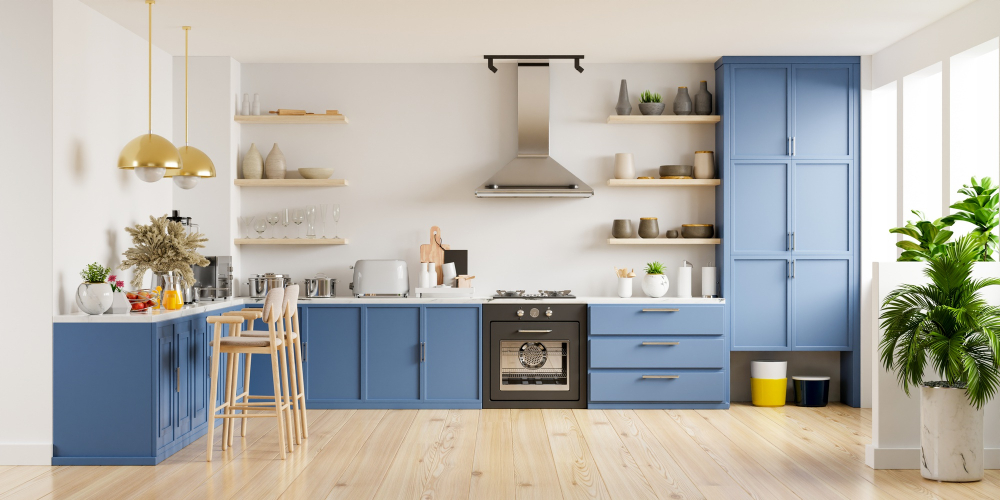
Some of the most popular ones include Broan-NuTone, Panasonic, and KitchenAid. These brands offer a wide range of exhaust fan models that cater to different needs and budgets.
Broan-NuTone is one of the leading manufacturers of ventilation products for residential use. Their range includes under-cabinet hoods, wall-mounted chimney hoods as well as island hoods with powerful blowers that can handle heavy smoke and steam.
Panasonic is another brand known for its high-quality kitchen exhaust fans with advanced features such as built-in LED lights and motion sensors. They also have whisper-quiet models that operate at low noise levels while still providing excellent performance.
KitchenAid offers a variety of stylish designs suitable for modern kitchens while maintaining optimal functionality. Their line-up includes both ducted and ductless options with multiple speed settings to control airflow according to your cooking needs.
Other notable brands worth mentioning include Zephyr, GE Appliances, Vent-A-Hood among others which provide quality products at competitive prices.
Noise Levels of Kitchen Exhaust Fans
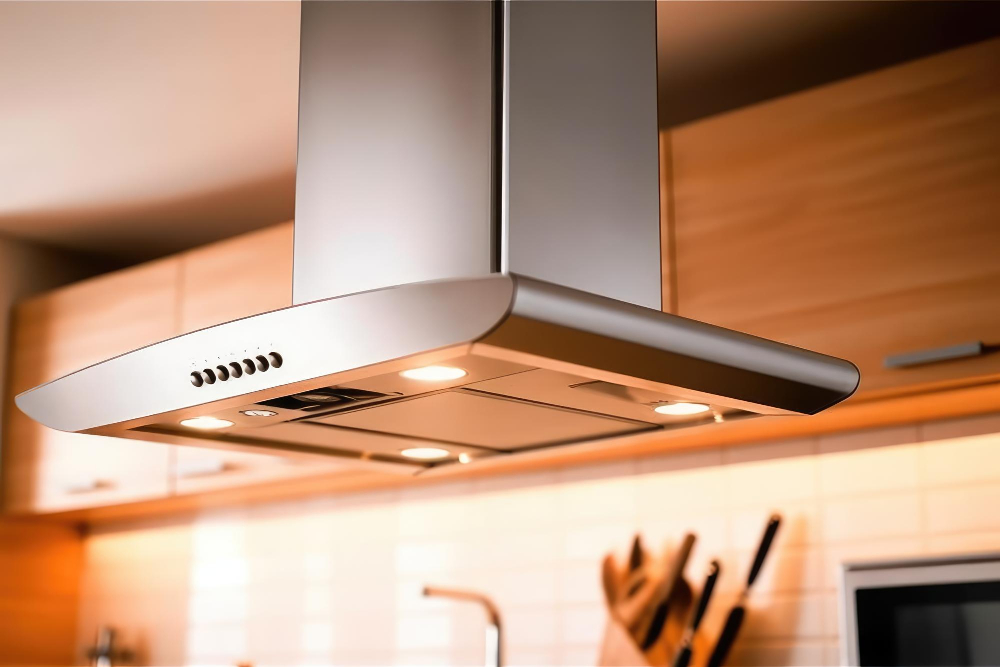
Some fans can be quite loud and disruptive, making them unsuitable for open-plan kitchens or homes with sleeping areas nearby. The noise level is measured in sones, with one sone being equivalent to the sound of a quiet refrigerator running.
Most modern kitchen exhaust fans have a noise rating between 0.5 and 6 sones. A fan rated at 1-2 sones is considered very quiet and ideal for most households as it won’t disturb conversations or TV watching while cooking.
However, if you’re looking for an ultra-quiet option that operates at less than one sone rating, expect to pay more money as these models come equipped with advanced features such as insulated motors and ducts designed specifically to reduce sound levels.
Exhaust Fan CFM Ratings
The higher the CFM rating, the more powerful and efficient your kitchen exhaust fan will be at removing smoke, steam and cooking odors from your home.
When choosing an exhaust fan for your kitchen, it’s important to consider its CFM rating based on the size of your space. A general rule of thumb is to have a minimum airflow rate (CFM) equal to or greater than 1 cubic foot per minute (cfm) per square foot area in order to achieve effective ventilation.
For example: If you have a 100 sq ft kitchen space with an eight-foot ceiling height then you would need at least 800 cfm capacity range hood or venting system installed above cooktops or stoves.
It’s also worth noting that some local building codes may require specific minimum CFMs depending on factors such as stove type and fuel source.
Tips for Reducing Installation Costs

First, consider doing some of the work yourself if you have experience with electrical or construction projects. This can save money on labor costs and allow for more control over the project timeline.
Another way to cut down on expenses is by choosing an exhaust fan that doesn’t require extensive ductwork or venting. Ductless models are typically less expensive than those requiring ducts and vents.
You may also want to shop around for deals and discounts from local contractors or home improvement stores. Some companies offer seasonal promotions or package deals when purchasing multiple appliances at once.
Be sure to properly maintain your new kitchen exhaust fan after installation as this will prevent costly repairs in the future while ensuring optimal performance.
Maintenance and Operating Costs

Regular cleaning of the fan blades, housing, and ductwork will help prevent buildup of grease and other debris that can reduce airflow or even cause a fire hazard. You should also replace the filters as recommended by the manufacturer or at least once every six months.
In addition to maintenance costs, operating costs are another factor to consider when installing a kitchen exhaust fan. The amount of energy consumed by your exhaust fan depends on its size, CFM rating (cubic feet per minute), speed settings used during cooking times and how often you use it.
To minimize operating costs while still maintaining good indoor air quality in your home’s kitchen space; consider investing in an Energy Star certified model with variable speed controls that allow for more efficient operation based on actual cooking needs rather than running continuously at full power all day long.
Energy Efficiency and Savings

A high-quality exhaust fan will remove excess heat and moisture from your kitchen, reducing the workload on your air conditioning system. This means that you’ll spend less money cooling down your home during hot weather.
Some modern exhaust fans come with energy-efficient features such as LED lighting and variable speed controls that allow you to adjust the airflow according to your needs. By using these features wisely, you can reduce electricity consumption while still enjoying a well-ventilated cooking space.
When shopping for an exhaust fan for your kitchen, look out for models with Energy Star certification or other industry-standard ratings that indicate their efficiency levels. While they may cost more upfront than non-certified models, they will pay off in terms of long-term savings on utility bills.
FAQ
How much is labor to install kitchen exhaust fan?
The average labor cost to install a kitchen exhaust fan is around $250.
How much does it cost to install a range exhaust fan?
The cost to install a range exhaust fan typically ranges from $200 to $500, depending on the complexity of the installation and excluding parts, ductwork modifications, or electrical work.
How much does it cost to install a air vent on kitchen?
The cost to install an air vent in a kitchen typically ranges between $400 and $1,500, with an average cost of about $750, including materials and labor.
Do kitchen exhaust fans need to be vented outside?
Yes, kitchen exhaust fans generally need to be vented outside to ensure the removal of smokey, greasy polluted air for health reasons, especially in commercial kitchens.
What factors can impact the overall cost of installing a kitchen exhaust fan?
Overall cost of installing a kitchen exhaust fan can be impacted by factors such as the type of fan, complexity of installation, space modifications, and professional labor rates.
Are there any additional expenses to consider when installing a range exhaust fan in the kitchen?
Yes, additional expenses to consider when installing a range exhaust fan in the kitchen include ductwork, electrical work, and potential structural modifications.
How do the prices vary for different types of kitchen exhaust fans and their installation?
Prices for different types of kitchen exhaust fans and their installation can vary widely depending on factors such as fan type, size, and complexity of installation.




